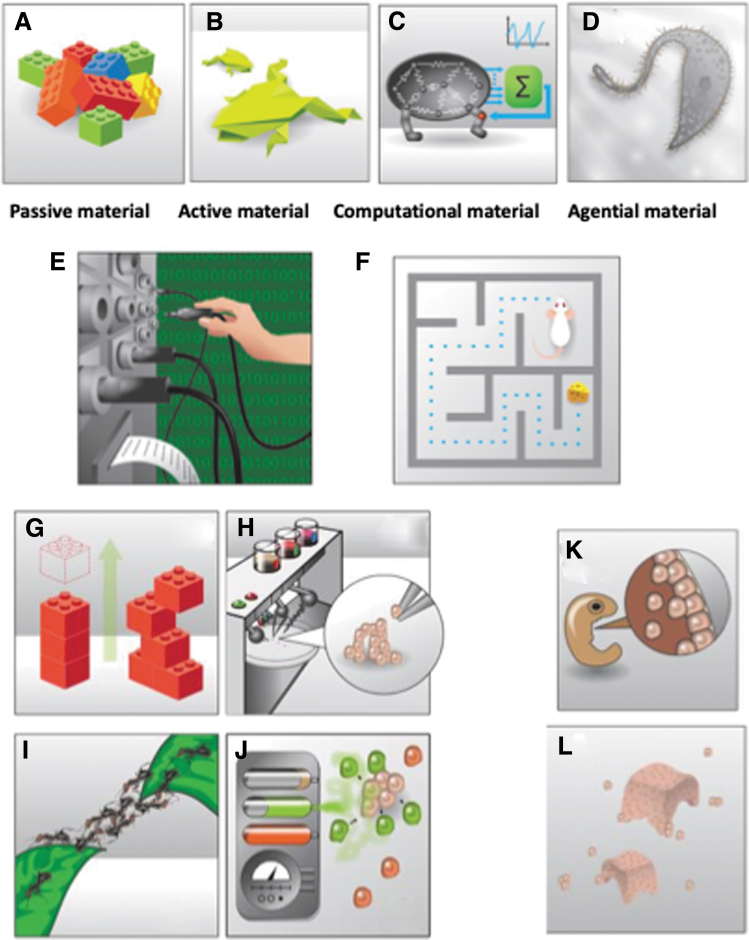FIG. 3.
Engineering with agential materials. Engineering has traditionally been carried out with passive materials (A), which can only be dependent on to keep their shape and other physical properties. These must be carefully managed for each desired functionality, giving rise to a perception of robotics as the manual arrangement of parts toward each goal. However, increasingly, engineering has moved toward active matter (B) and computational media (C) as well recognized in soft robotics;79–81 now, biorobotics enters a new phase transition where the material is “agential”—it is composed of subunits (D, living cells) which themselves were whole organisms once and thus have many built-in competencies and agendas,82 including problem-solving in physiological, metabolic, and morphological problem spaces.78,79,83,84 This means that robots are now not only constructed by physical (or even genetic) rewiring (E) but more akin to behavior-shaping (F), using signals and environments to achieve desired system-level behavior. In contrast and complement to 3D-printing and similar approaches designed for building with passive matter (G), which also works with cells (H), collective intelligence of living systems at all scales (such as that of an ant swarm, I) can be used to manipulate the collective behavior of cells (J) in anatomical morphospace, by signaling that alters the collective's navigation policy of that space: just as instructive signals from other cells cause frog ectodermal cells to be a two-dimensional barrier in standard embryos (K), techniques such as subtraction (of other cells and their signals) and stimuli can achieve guided self-assembly toward novel form and function (L). 3D, three-dimensional. All images by Jeremy Guay of Peregrine Creative, used with permission.

